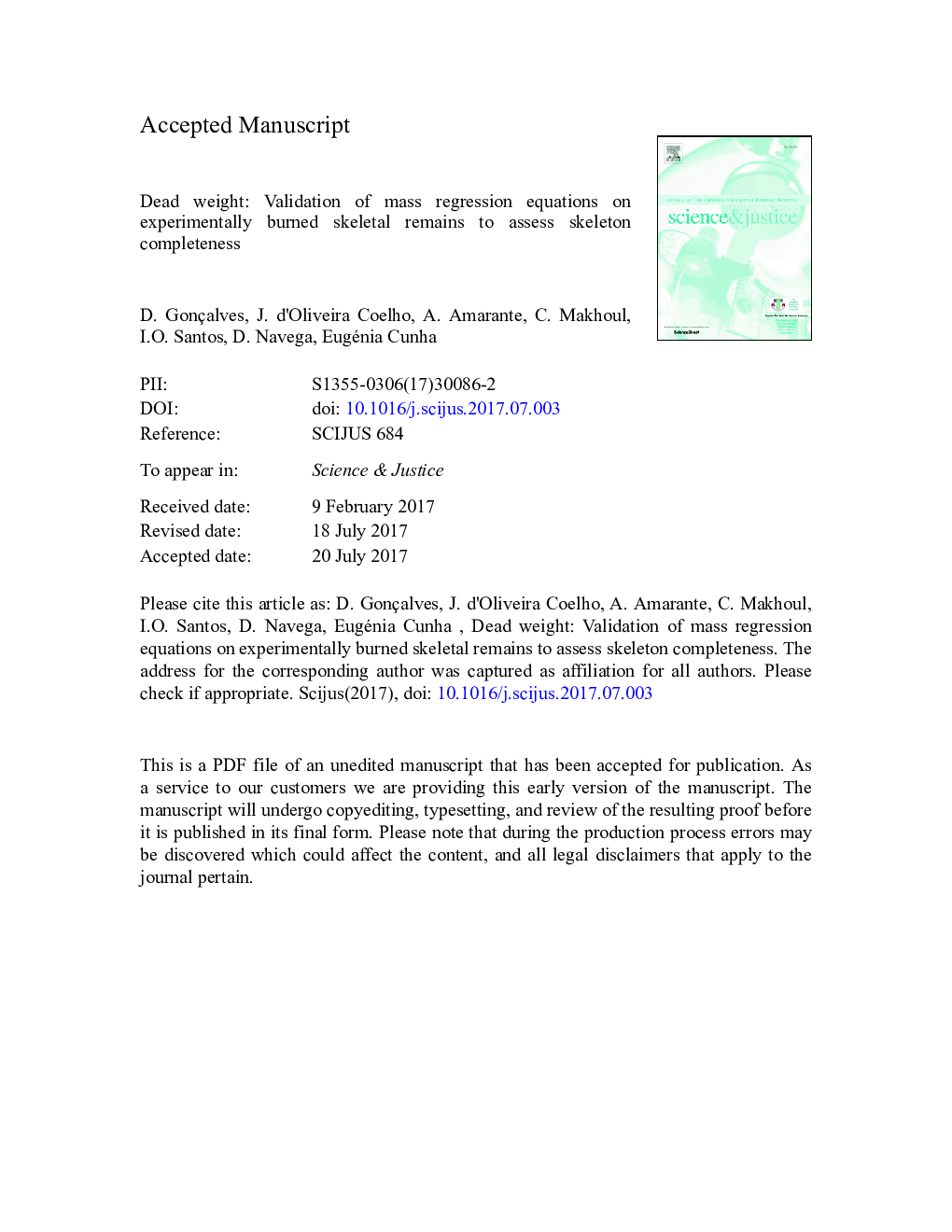| Article ID | Journal | Published Year | Pages | File Type |
|---|---|---|---|---|
| 6555929 | Science & Justice | 2018 | 17 Pages |
Abstract
In very fragmentary remains, the thorough inventory of skeletal elements is often impossible to accomplish. Mass has been used instead to assess the completeness of the skeleton. Two different mass-based methods of assessing skeleton completeness were tested on a sample of experimentally burned skeletons with the objective of determining which of them is more reliable. The first method was based on a simple comparison of the mass of each individual skeleton with previously published mass references. The second method was based on mass linear regressions from individual bones to estimate complete skeleton mass. The clavicle, humerus, femur, patella, metacarpal, metatarsal and tarsal bones were used. The sample was composed of 20 experimentally burned skeletons from 10 males and 10 females with ages-at-death between 68 and 90Â years old. Results demonstrated that the regression approach is more objective and more reliable than the reference comparison approach even though not all bones provided satisfactory estimations of the complete skeleton mass. The femur, humerus and patella provided the best performances among the individual bones. The estimations based on the latter had root mean squared errors (RMSE) smaller than 300Â g. Results demonstrated that the regression approach is quite promising although the patella was the only reasonable predictor expected to survive sufficiently intact to a burning event at high temperatures. The mass comparison approach has the advantage of not depending on the preservation of individual bones. Whenever bones are intact though, the application of mass regressions should be preferentially used because it is less subjective.
Related Topics
Physical Sciences and Engineering
Chemistry
Analytical Chemistry
Authors
D. Gonçalves, J. d'Oliveira Coelho, A. Amarante, C. Makhoul, I. Oliveira-Santos, D. Navega, E. Cunha,
